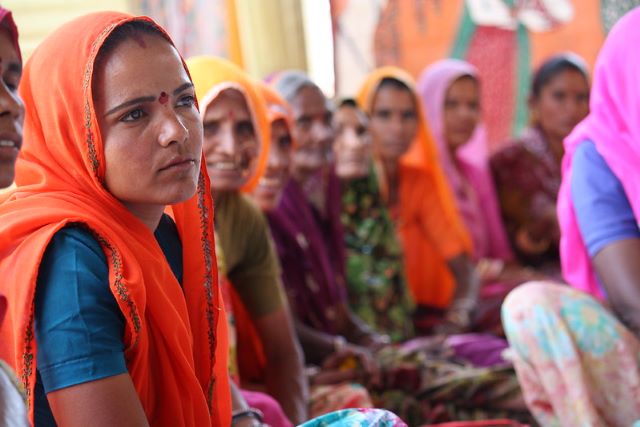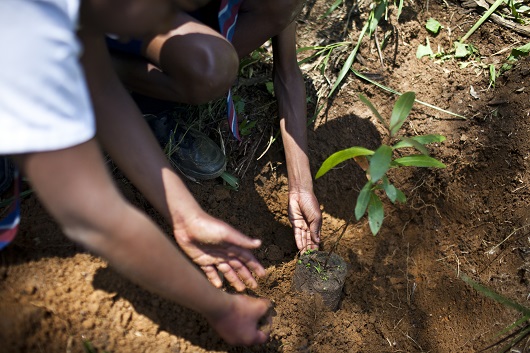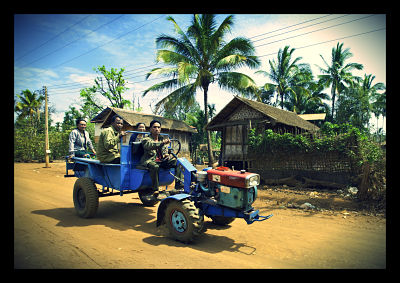
In today’s world, which is filled with newfound technological advancement, widespread wealth and endless opportunities for many, it can be both confusing and distressing that millions still live in poverty. Therefore, while we tend to celebrate the advancements of the modern world, a significant portion of humanity struggles to meet their most basic needs.
In describing the consequences of widespread poverty, Regis University Professor tells The Borgen Project in an interview, “There are many negative consequences of poverty, both for individuals and for society at large. Poverty is not only associated with exploitation, lack of decent housing, lack of access to health care and lack of access to education, which all impact life expectancy and life satisfaction at the individual level, but it has huge impacts on whole societies. Poverty correlates with high criminality, criminal gang membership and recruitment, civil war onset, with various forms of radicalization and even some forms of gender-based violence.”
As a result, the persistence of global poverty is a challenge that demands immediate attention from every corner of the globe. This being said, here are further reasons why solving global poverty is everyone’s concern.
Moral Concerns
At its core, the fight against global poverty is an urgent moral concern. This is because every individual, regardless of their circumstances, deserves the right to live a life of security and equal opportunity. Nonetheless, widespread poverty continues to undermine these moral principles by depriving individuals of access to food, clean water, education and health care, all of which are essential human rights.
In expressing these inequalities, Regis University Professor tells The Borgen Project, “Of course, we should all care about poverty because it is a moral issue and we should strive for a more just world where people have access to their basic needs at the very least. It is important to point out too that we in rich countries should reflect more often on how our consumerism and choices perpetuate poverty and rely on the oppression of poor individuals in poorer nations.”
Adding to this statement, a report by the United Nations Development Programme (UNDP) emphasizes how poverty remains a significant obstacle to achieving basic human rights globally. For example, poverty often deprives individuals of access to fundamental necessities such as food, clean water, education and health care, all thereby impeding their ability to lead dignified lives. Finally, poverty can exacerbate existing inequalities and perpetuate systemic injustices, injustices we remain complicit in perpetuating if we fail to recognize why solving global poverty is everyone’s concern.
Global Interconnectedness
As our world becomes increasingly interconnected, the impacts of poverty also extend far beyond the communities where it is most prevalent. Poverty is something that breeds instability, perpetuates conflict, fuels migration across the globe and, as a Regis University professor tells The Borgen Project, “can be one variable explaining civil wars. Scholars have found, for example, that civil wars can spread to neighboring countries through the inflow of arms, ideas and combatants across borders. Thus, this is a very real way in which poverty can be a backdrop explaining civil war and the contagion of other neighboring countries, generating regional instability.” Therefore, the eradication of poverty is not only a matter of social justice but also a matter of global security and stability and it is a key reason why solving global poverty is everyone’s concern.
Economic Growth and Prosperity
Despite many traditional beliefs, poverty is not simply a consequence of underdevelopment. It also poses significant obstacles to all types of development. For example, poverty hinders economic growth by depriving communities of human capital and productive resources. Moreover, when individuals lack access to education and health care, their potential contributions to the economy can never be realized. In this way, poverty creates a cycle of hardships that leads families and communities into a state of continuous struggle.
Nonetheless, working to reduce poverty has the potential to break this cycle. The Department for International Development (DFID) highlights, for example, that “strong economic growth therefore advances human development, which, in turn, promotes economic growth.” Therefore, by contributing to poverty alleviation efforts and recognizing why solving global poverty is everyone’s concern, we are able to realize the economic potential of all people, leading to greater prosperity for society as a whole.
Environmental Sustainability
The alleviation of poverty is also inherently connected to environmental sustainability. Research conducted by the Intergovernmental Panel on Climate Change (IPCC) specifically describes this intricate relationship between poverty alleviation and environmental sustainability. The IPCC reports that poverty often compels individuals and communities to engage in unsustainable practices, such as deforestation and overexploitation of natural resources, as a means of survival.
These activities then contribute to environmental degradation, including habitat destruction and loss of biodiversity, intensifying the effects of climate change on the most vulnerable populations. As a result, impoverished communities are disproportionately affected by the negative impacts of poverty, such as extreme weather events and declining agricultural productivity. However, by helping to lift people out of poverty and providing them with paths to more prosperous livelihoods, we can promote sustainable practices that protect the planet for future generations.
Long-Term Stability
Finally, working to eradicate poverty is not merely a short-term fix. It is an investment in long-term stability and prosperity. Therefore, by realizing why solving global poverty is everyone’s concern and addressing the underlying structural factors that perpetuate it, we are able to create the conditions for sustainable development and lasting change. Improving education, health care and economic opportunities, for example, serve as platforms for societies to withstand future challenges relating to poverty.
In regard to creating these long-term solutions, Regis University Professor tells The Borgen Project, “As citizens in a democracy, we should recognize more fully the power we have to shape policy. We can form advocacy or lobbying groups, join social movements or create them and donate to international organizations that are credible in fighting poverty. We can also demand better policy-making around this area. In the United States (U.S.), a very tiny percentage of taxes are used for foreign aid through the USAID (U.S. Agency for International Development). We must demand more transparency on how funds are allocated and programs evaluated so we understand which projects and programs are more effective in poverty alleviation.” In these ways, we can lay the groundwork for a more equitable world that will prosper for years to come.
– Olivia Pitrof
Photo: Pexels

 On September 22, 2020, Peter Eriksson, Sweden’s Minister for International Development Cooperation, took to Twitter to announce that Sweden will continue to commit
On September 22, 2020, Peter Eriksson, Sweden’s Minister for International Development Cooperation, took to Twitter to announce that Sweden will continue to commit  Several activists and actors have raised alarm over the potentially devastating effects that personal protective equipment (PPE) can have in terms of increasing pollution around the world. There have been reports of
Several activists and actors have raised alarm over the potentially devastating effects that personal protective equipment (PPE) can have in terms of increasing pollution around the world. There have been reports of  At the Millennium Summit in 2000, history was made when a record number of world leaders gathered to adopt the U.N. Millennium Declaration, committing nations to cutting extreme poverty in half through the
At the Millennium Summit in 2000, history was made when a record number of world leaders gathered to adopt the U.N. Millennium Declaration, committing nations to cutting extreme poverty in half through the  The
The 



 Access to energy is critical to the development of a nation. It allows for increased productivity and standards of living. Although the cheapest sources of energy often come from nonrenewable sources, developing countries should look to clean energy sources to fulfill their energy needs. Here are the 5 reasons why access to clean energy should be a top priority in development.
Access to energy is critical to the development of a nation. It allows for increased productivity and standards of living. Although the cheapest sources of energy often come from nonrenewable sources, developing countries should look to clean energy sources to fulfill their energy needs. Here are the 5 reasons why access to clean energy should be a top priority in development.